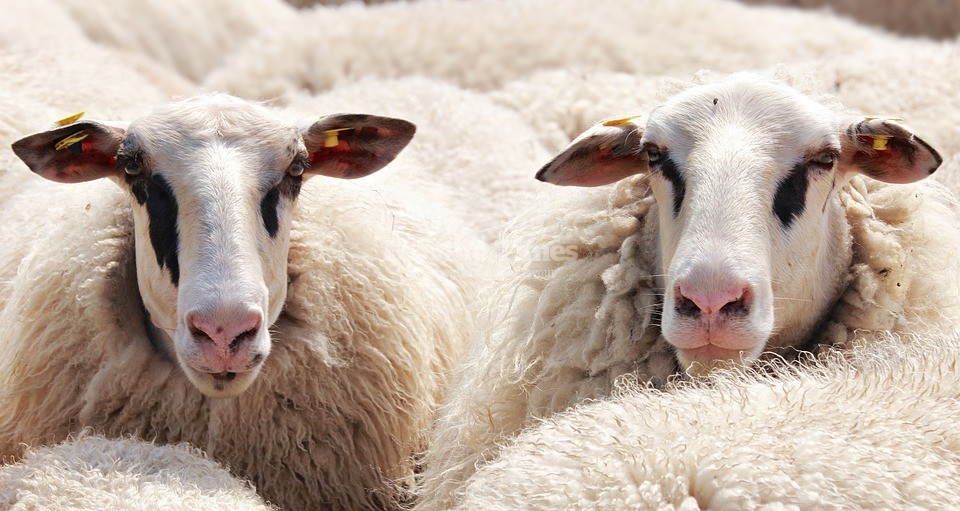Staff Writer
Lesotho relies mainly on rain-fed agriculture and in recent years, the agricultural economy has suffered from extreme weather conditions such as prolonged drought and flooding.
There is an acute awareness in the government and within communities that climate change is already impacting on the lives of Basotho and their future. It is with this in mind that the government requested donors to support the climate proofing of its agricultural production system.
The Wool and Mohair Promotion Project (WAMPP), is therefore, designed in response to the government’s request to provide support to this important aspect of Lesotho’s rural economy on which so many of its women and men (small holder producers) depend on. Its development objective is to enable smallholder livestock producers to generate high incomes and it consists of three components in order to achieve its objective;
- Component A: Climate Smart Rangeland Management
- Component B: Improved Livestock Production and Management
- Component C: Wool and Mohair Fibre Processing and Marketing
The focus of this material will be on Component C (Wool and Mohair Fibre Processing and Marketing), particularly on the Sub-Component C1 (Value Chain Based Enterprise Enhancement). The objective of this Sub-Component is to improve the quality of Lesotho wool and mohair, thereby raising returns for livestock producers. In order to achieve this objective, WAMPP provides support through Department of Marketing in implementation of the following interventions;
- Promoting shearing shed association enterprise development
- Strengthening fibre handling and grading at shearing sheds
- Conducting improvement of shearing sheds facilities and investing in access (feeder) roads
The wool and mohair value chain competitiveness requires improving the number and design of existing shearing sheds as well as by improving shearing shed management and strengthening capacity of its members in shearing techniques and fibre classing, proper storage and bale packaging, associated with improved shearing sheds infrastructure and improved access to markets. This will result in higher quality fibre being marketed at lower cost, thereby improving returns to livestock producers. On that note, achievements in relation to the above interventions are depicted below:
Promoting shearing shed association enterprise development
The focus on improving shearing shed capacity building activities in regard to entrepreneurial management as well as record keeping. Until this far, one training workshop was held at Mohale’s hoek District as a pilot and nine training workshops will follow from 7 June 2021.
Strengthening fibre handling and grading at shearing sheds
Under this intervention, WAMPP provides support to improve shearing sheds capacities to shear, record and class wool and mohair, as well as proper storage and packaging of the bales. As a result, three types of trainings were successfully held for Shearers, Classers and Recorders all over the 10 districts of Lesotho and the detailed achievements are as follows;
One hundred and eighty-five wool and mohair Shearers from ten districts were trained on pattern shearing with the intention to increase staple length by decreasing double cuts and injuries to shorn sheep and goats so as to maximise farmer’s proceeds.
Four hundred and seventy-six wool and mohair Classers from ten districts were trained on sorting and classing of wool and mohair where they are equipped with proper skills to be able to avoid losses in farmers’ returns from the auction floor.
Twelve Marketing Officers from the Department of Marketing were also trained on wool classing- “springbok” training-of-trainers. That training entails but not limited to the fleece throwing, identification, judging, grouping, classing standards and packaging of wool. This was aimed at further extending the skills to the shearing shed classers for improvement on the above aspects that would eventually result in increased farm returns.
Two hundred and sixty-four wool and mohair recorders were trained on accuracy of shearing sheds record books, record sequencing, proper scale reading, capturing weights, round off numbers, balancing and reconciliation in order to speedup farmers payments.
Two hundred and fifty association members (two members per shed) of all governments’ sheds were trained on the importance of wool and mohair shearing record books and their sequencing during shearing process as well as required documents before shearing.
Improvement of shearing sheds facilities and investing in access (feeder) roads the project supports construction of additional new shearing sheds, rehabilitation of old shearing sheds and improvement of existing shearing sheds through; improved water supply management, access to electricity and linkage of shearing sheds to feeder roads. These are done ideally to improve functionality of the shearing sheds and to introduce usage of more advanced shearing equipment that will add value fibre quality and shearing speed. Below are detailed achievements of the above-mentioned infrastructural development activities.
Twenty new shearing sheds were constructed at Thuathe, Ha-Nchela, Ha-Mallane, Lipetu, Qholaqhoe, Matsoku, Semenanyane, Semena, Ha-Soai, Mohlapiso,Melikane, Seorong, Ha-Mafora, Hloahloeng, Maphutseng, Phamong, Ha-Ntsibana, Hermon, Boreipala and Kubake.
Forty-two existing shearing sheds were identified for rehabilitation and 16 sheds completed at Tlali, Bushman, Mokema, Ramabanta, Tšakholo, Matelile, Thabana Morena, Duma, Masemouse, Ntjepeleng, Mekaling, Moyeni, Tšepo, Makoae, Ntsie, Dilli Dilli, Sebetia, Nokong, Hlotse, Peka, Thibeli, Palama, Thaba Chitja, Rampai, Motete, Mateanong, Makhapung, Libibing, Liphamola, Senqu, Meno, Suoane, Qabane, Ramatseliso, Makhaola, Sehapa, Tsoelike, Koporale, Maqhaka, Likhutlong and Libono.
Forty existing sheds were identified for water supply connection and 28 completed at Sebetia, Thuathe, Nchela, Fobane, Terateng, Mallane, Lipetu, Tsime, Lelutla, Qholaqhoe, Sanqebethu, Liphamola, Matsoku, Semenanyana, Makunyapane, Sehonghong, China, Bobete, Mantsonyane, Litsoetse, Semena, Soai, Matebeng, Sekake, Mosaqane, Mohlapiso, Mphaki, Tšepo, Majoe Matšo, Seforong, Moseneke, Qabane, Ntjepeleng, Ketane, Taung, Mekaling, Maphutseng, Hloahloeng, Phamong, Ntsibana, Hermon , Tšakholo, Mathebe, Kolo, Rapoleboea, Machache, Semione, Moahloli, Matsieng, Marakabei, Kubake and Boreipala.
Thirty four Existing sheds identified for either grid or solar power supply connection and connection of grid power supply have been completed at Moletsane, Mateka,BelaBela,Libono,ThabaNtso,Matlakeng,Menoaneng,Lesobeng,Letuka,Methalaneng,Lebakeng,Mapote, Sehlaba-Thebe, Qhoalinyane, Semenyane, Tsatsane, Sixondo,Tosing,Lebelonyane,Mpharane,Qobong,Ketane,Taung,Motlejoeng,Matelile,Masemousu,Kolo,Soosa,Simione ,Likorolo, Matsieng, Fobane, Koasa and Pelaneng
About 14, 5 km out of a target of 30-50 km feeder road have been completed at Thuathe, Moyeni, Mabilikoe, Ha-Suoane, Sehapa and Sekake.

